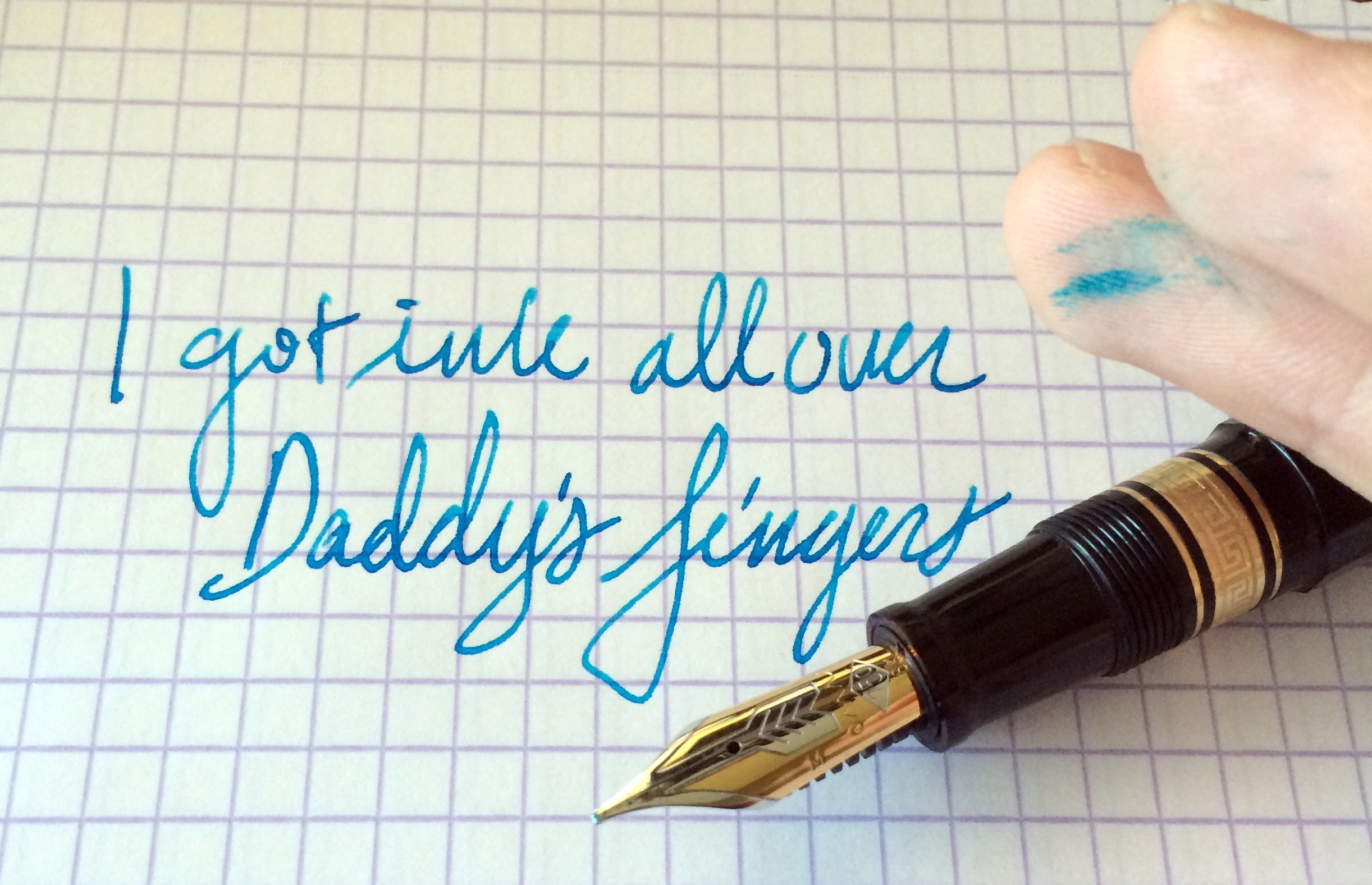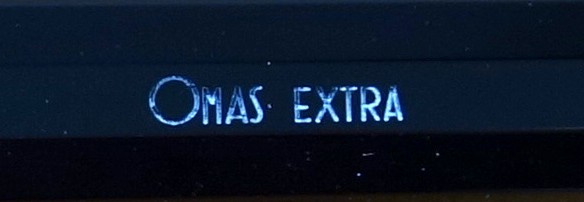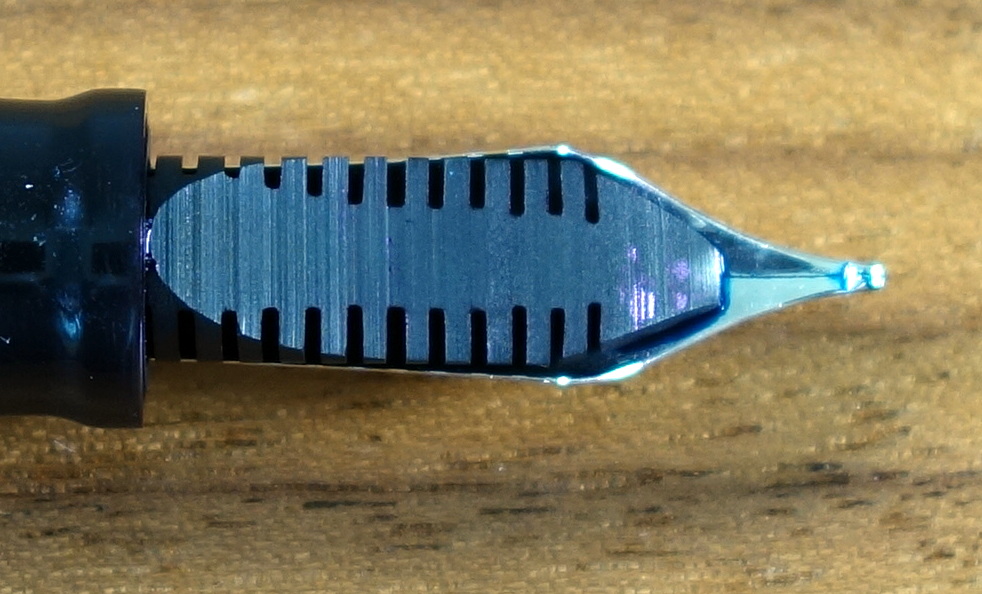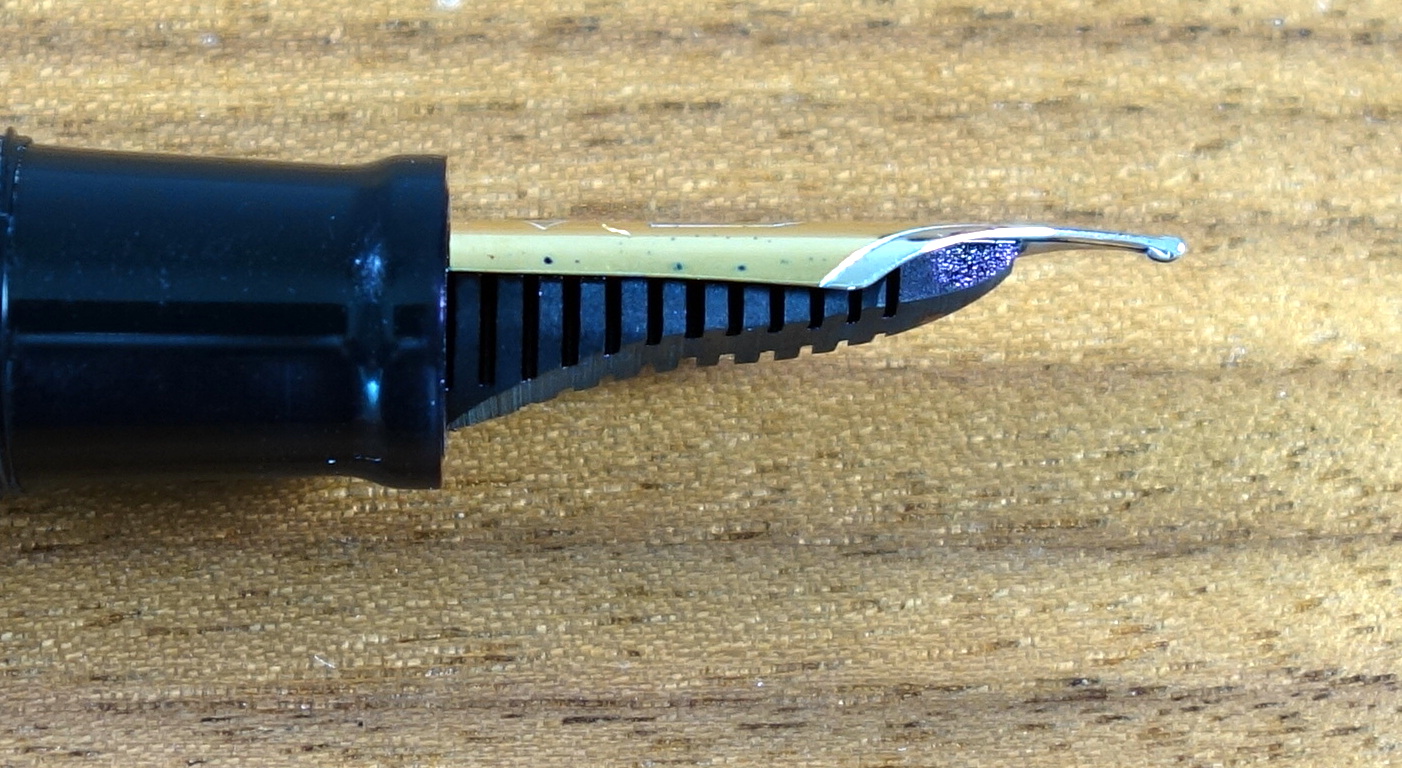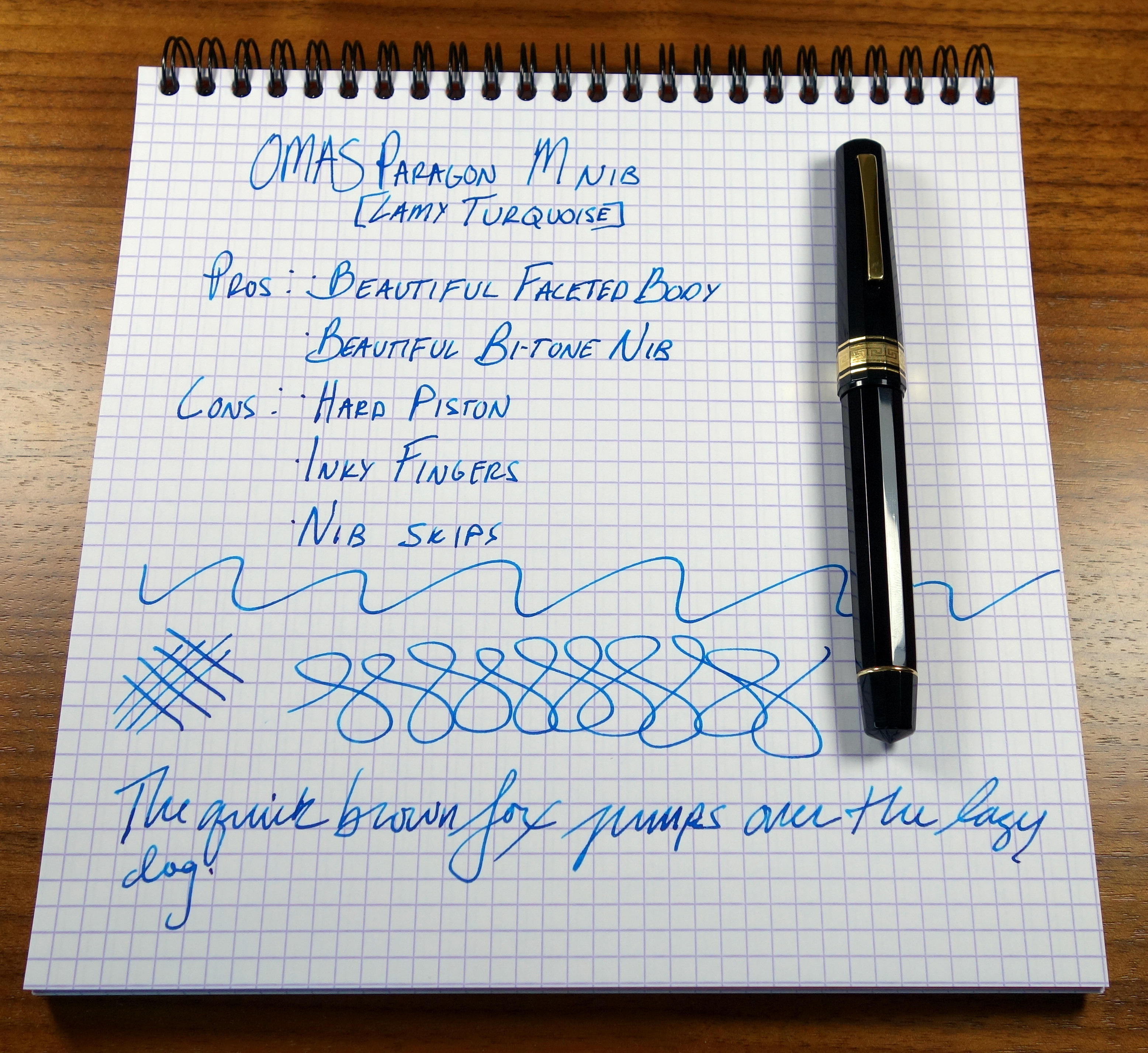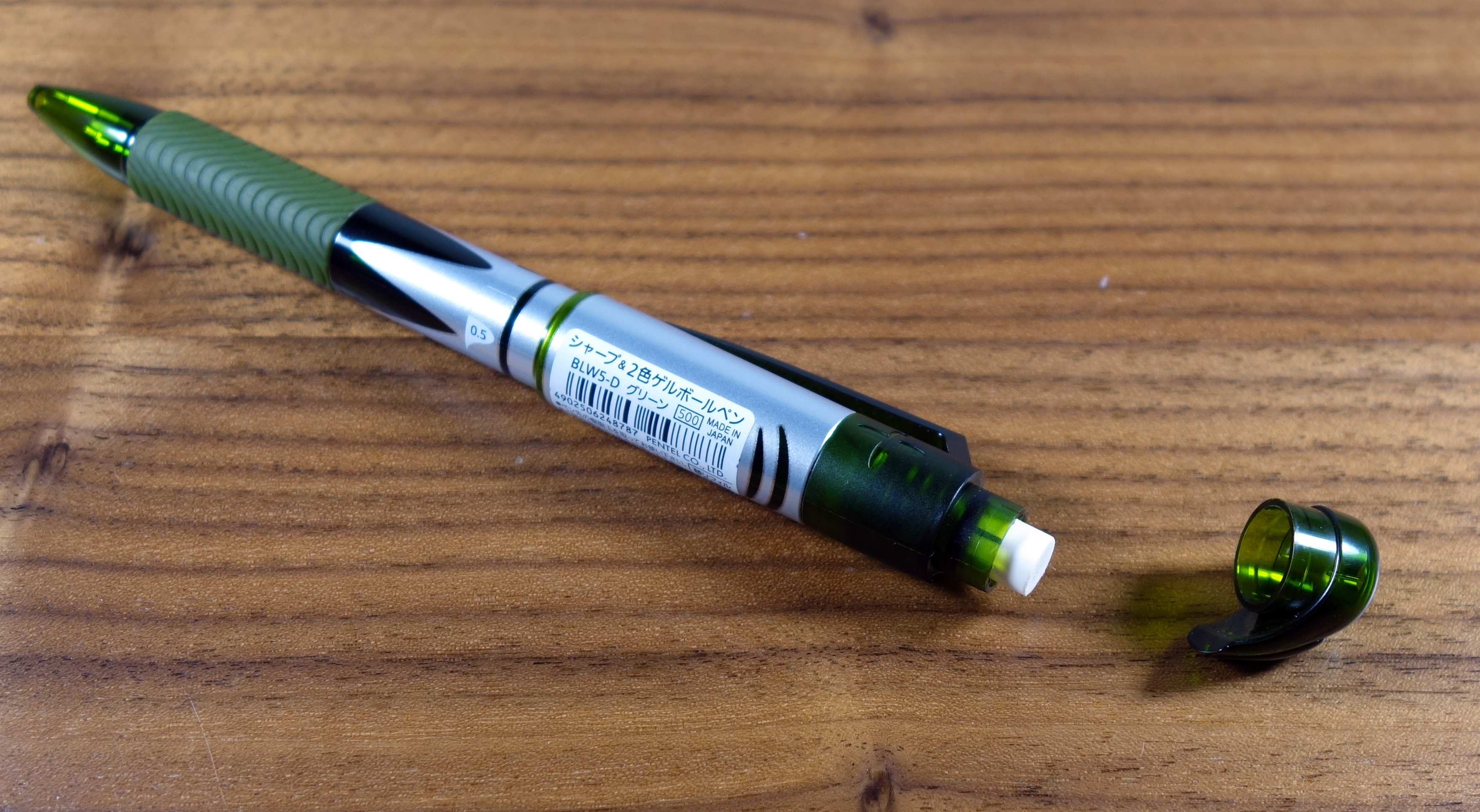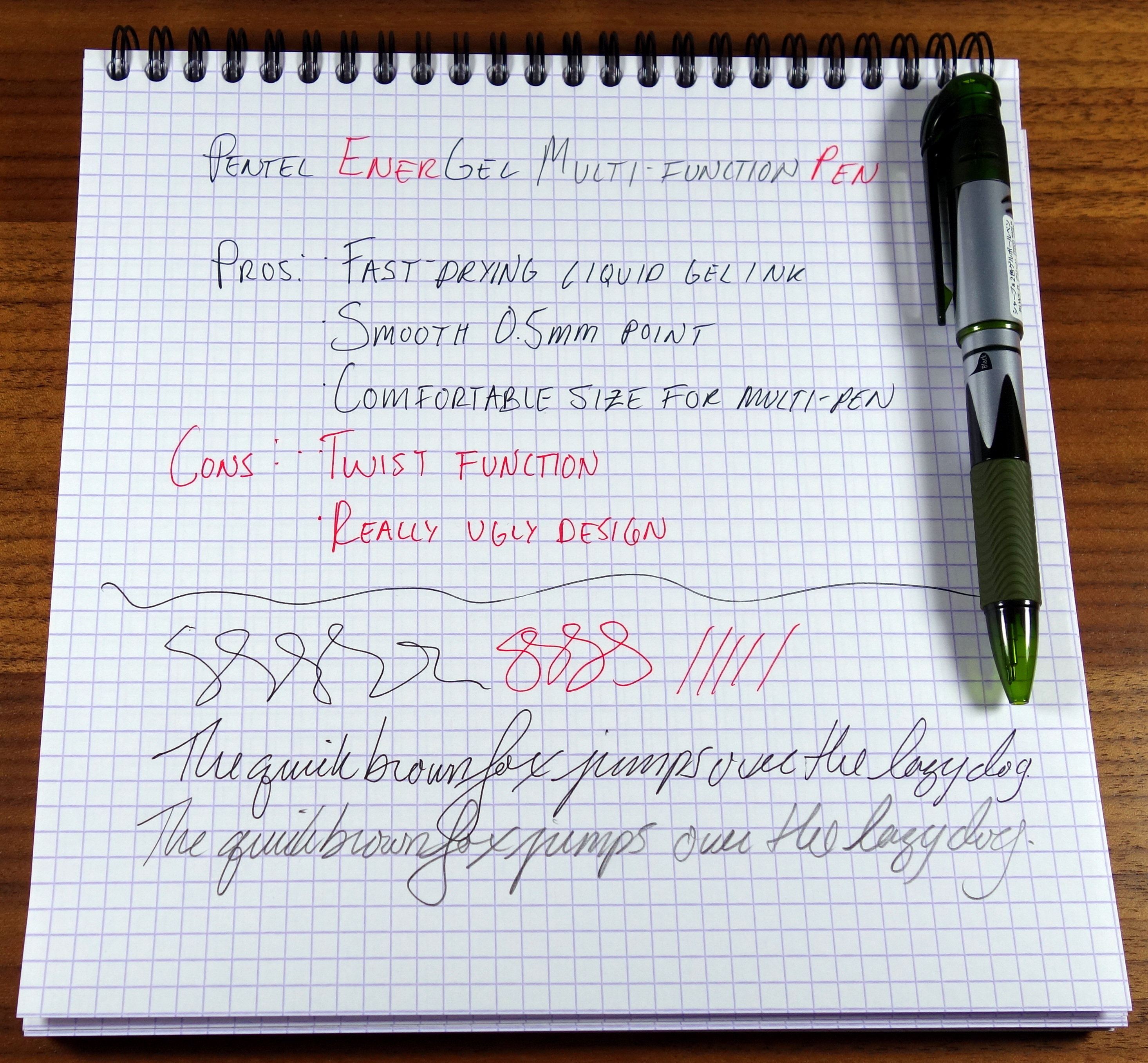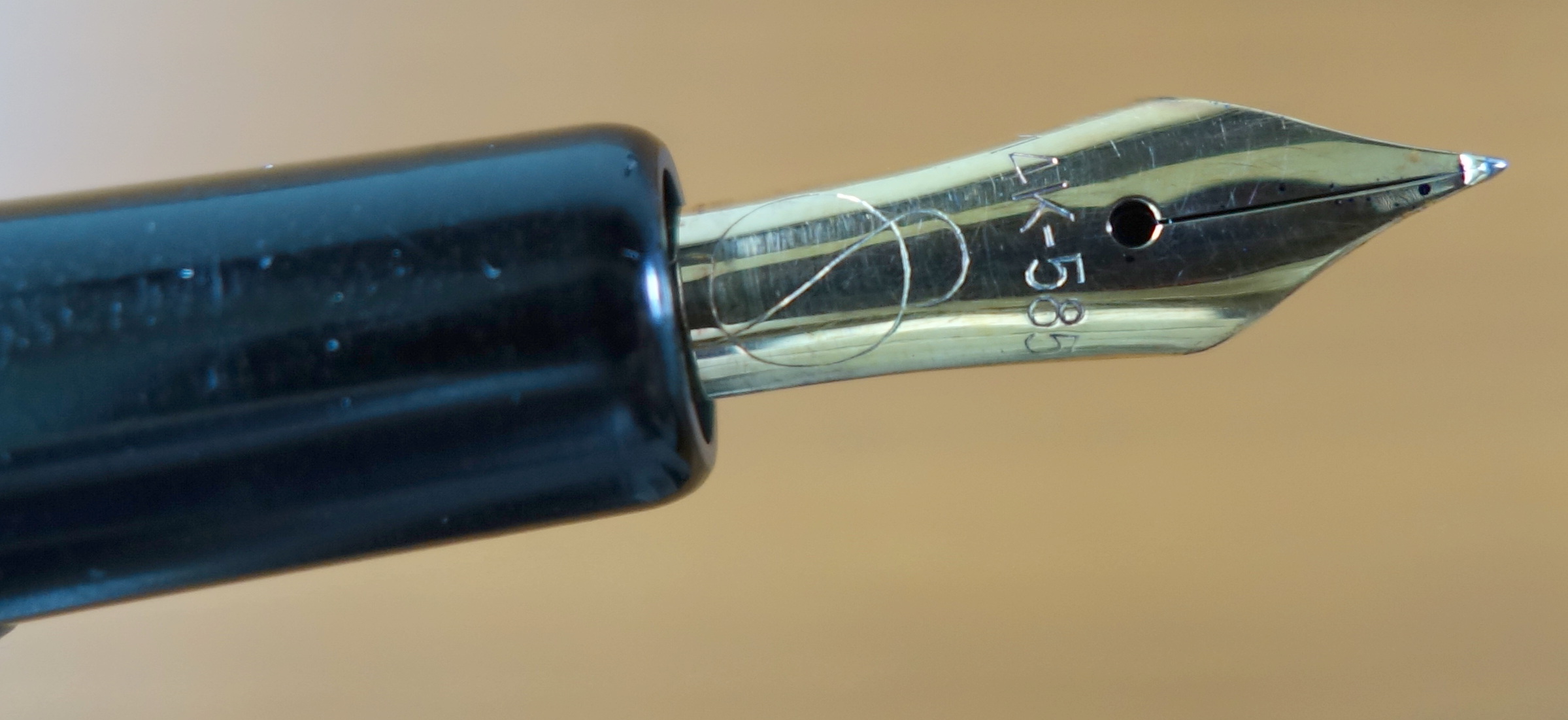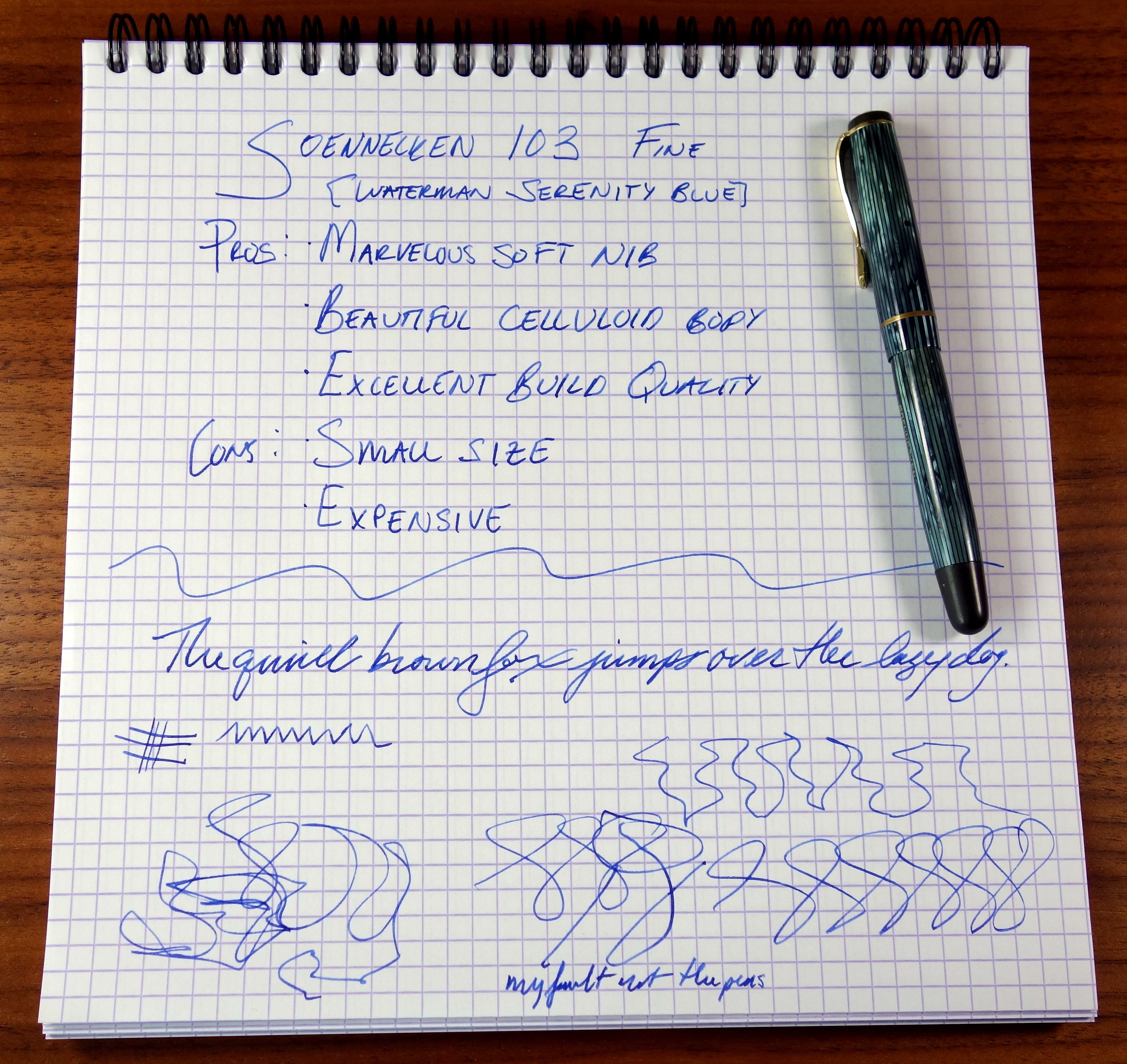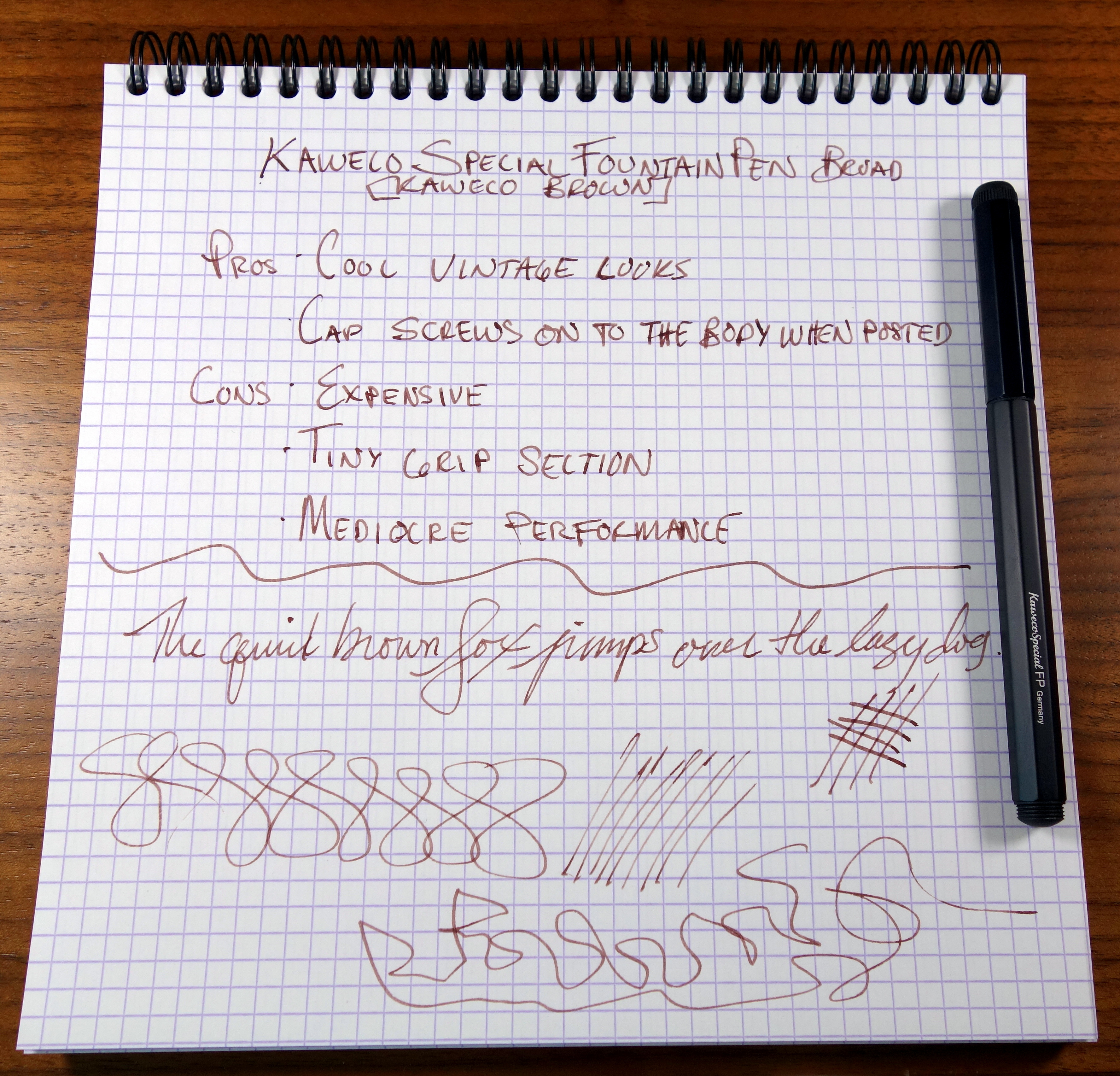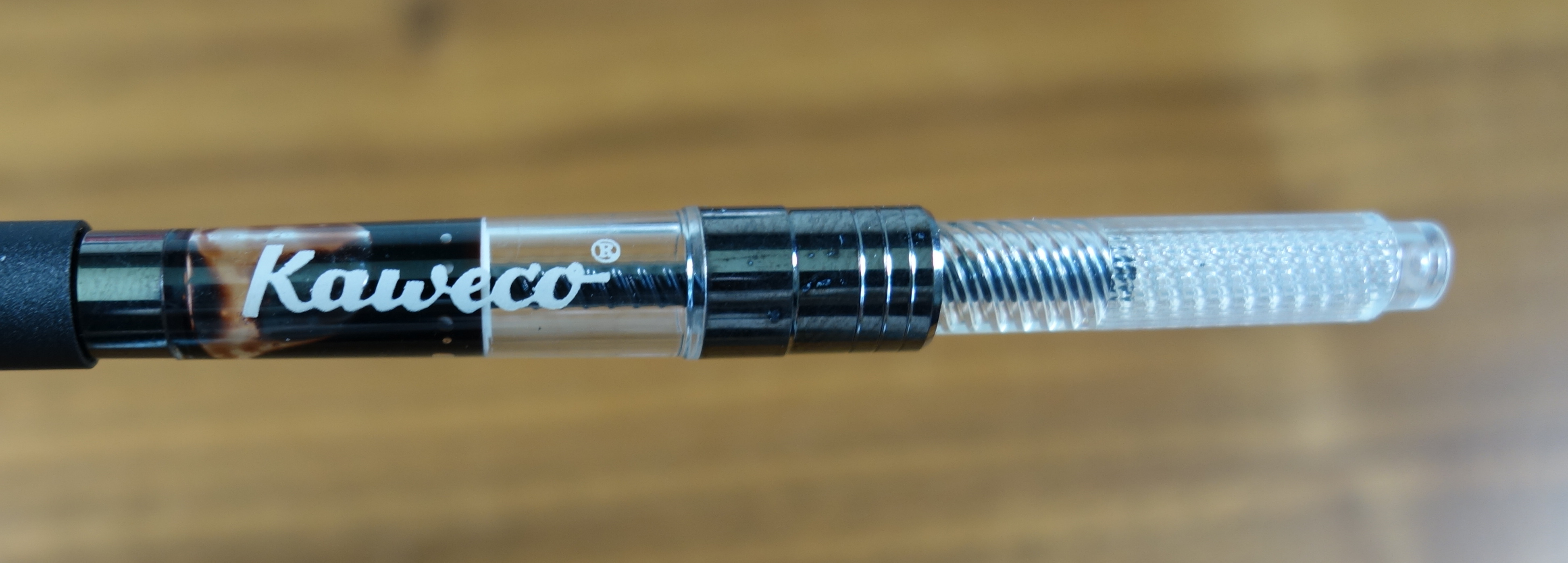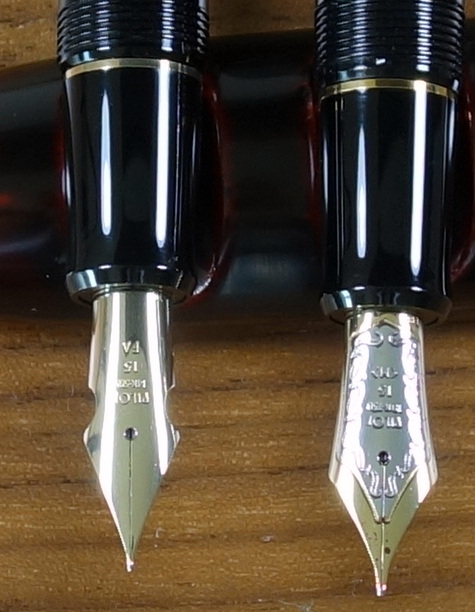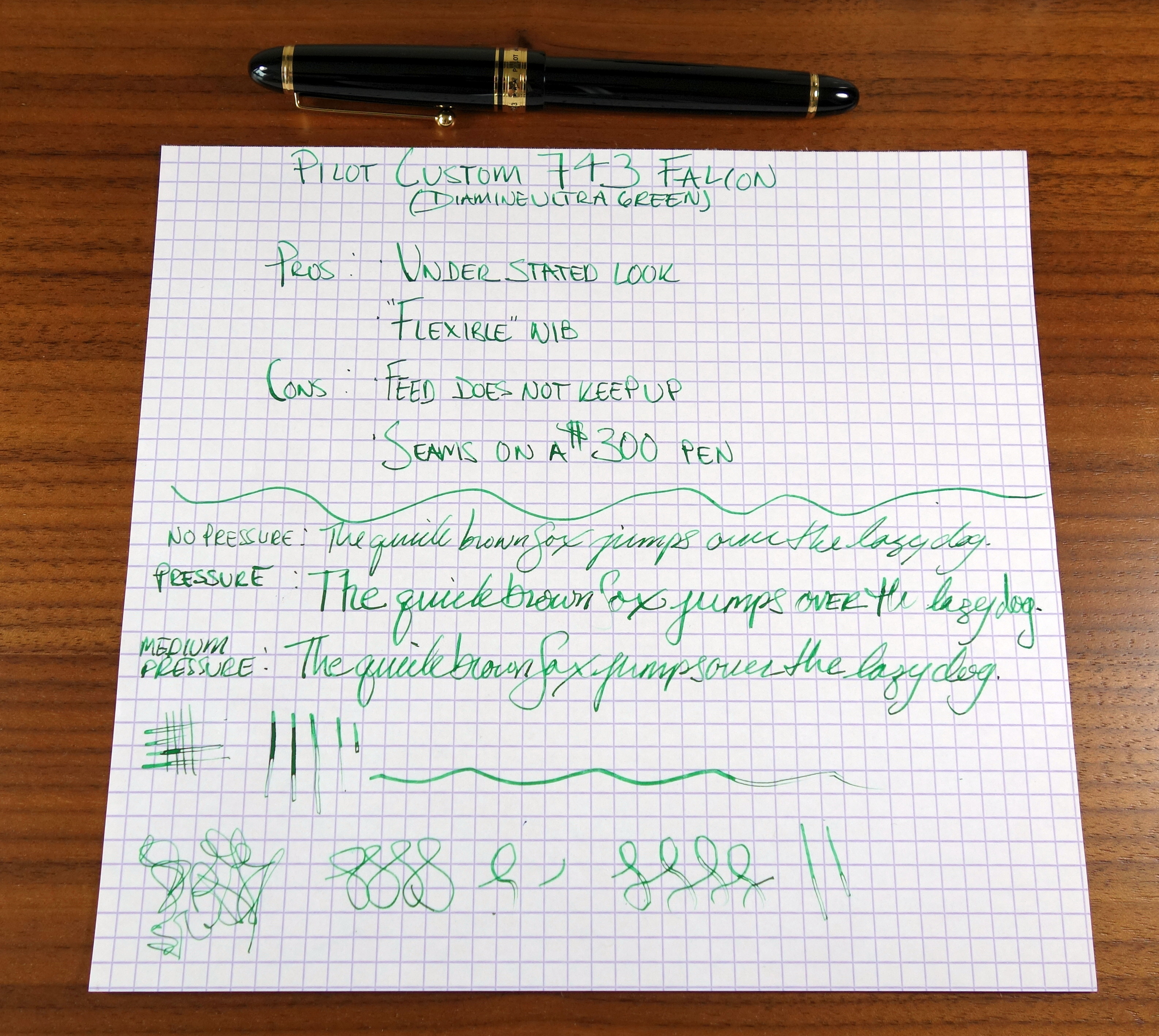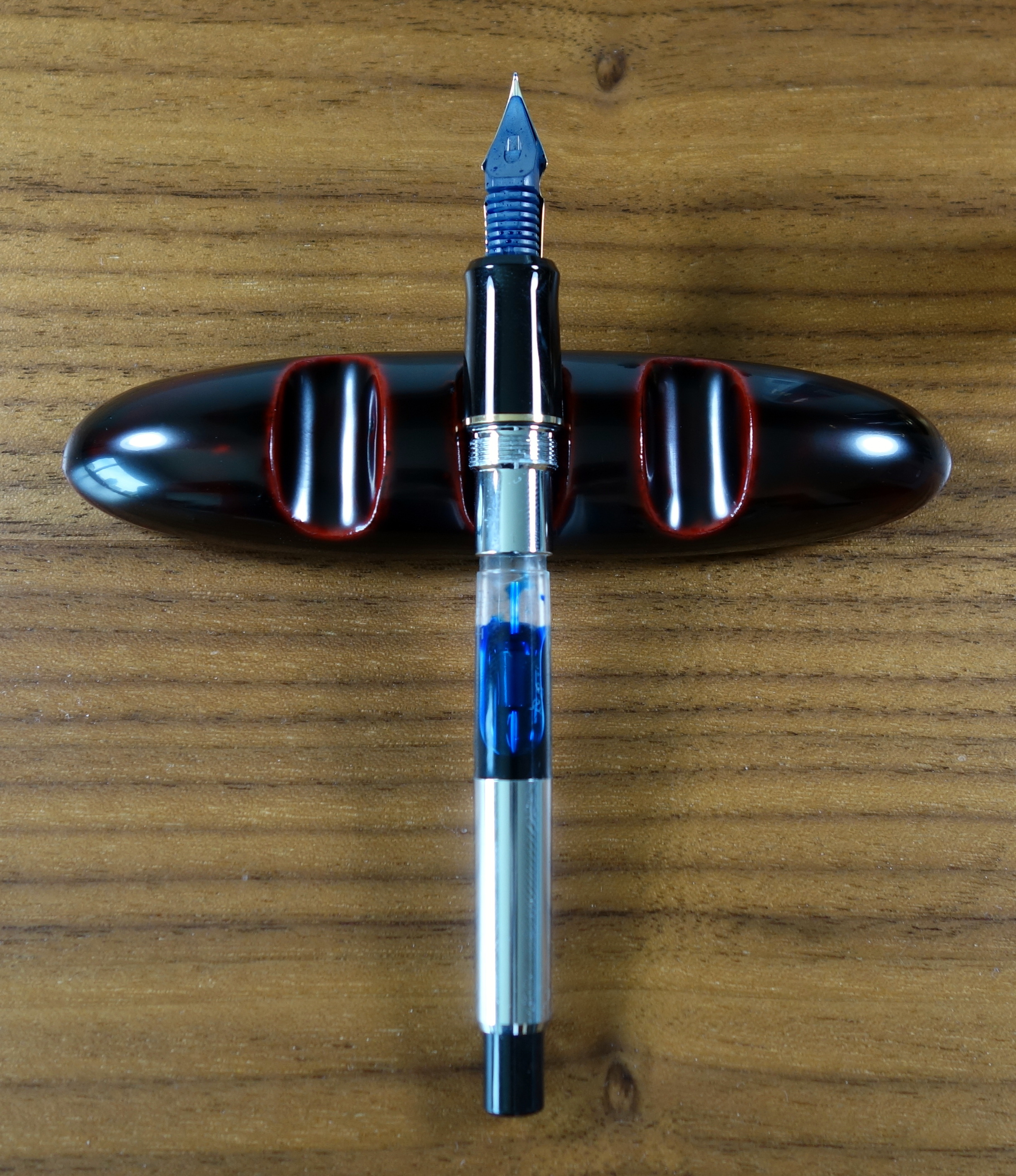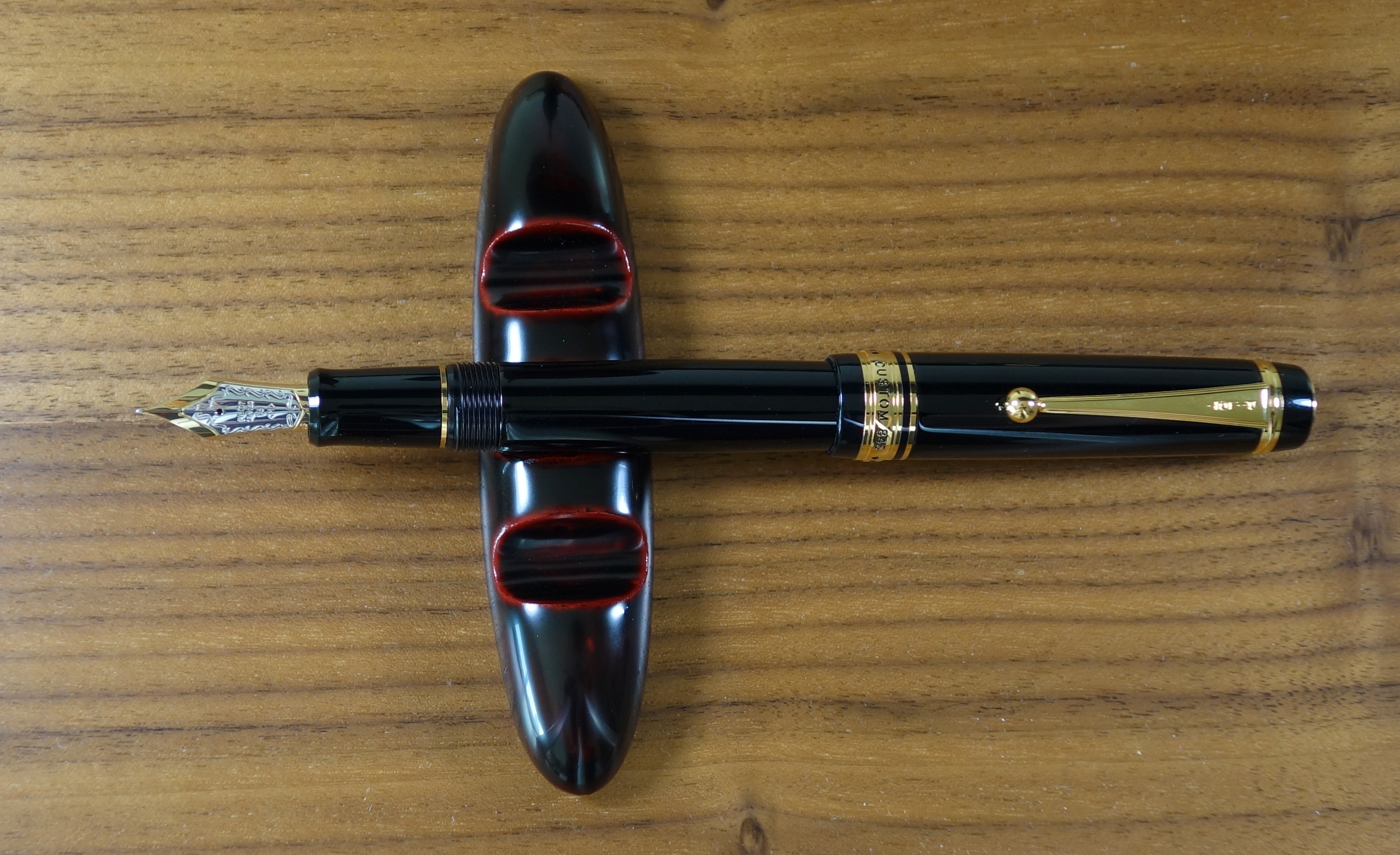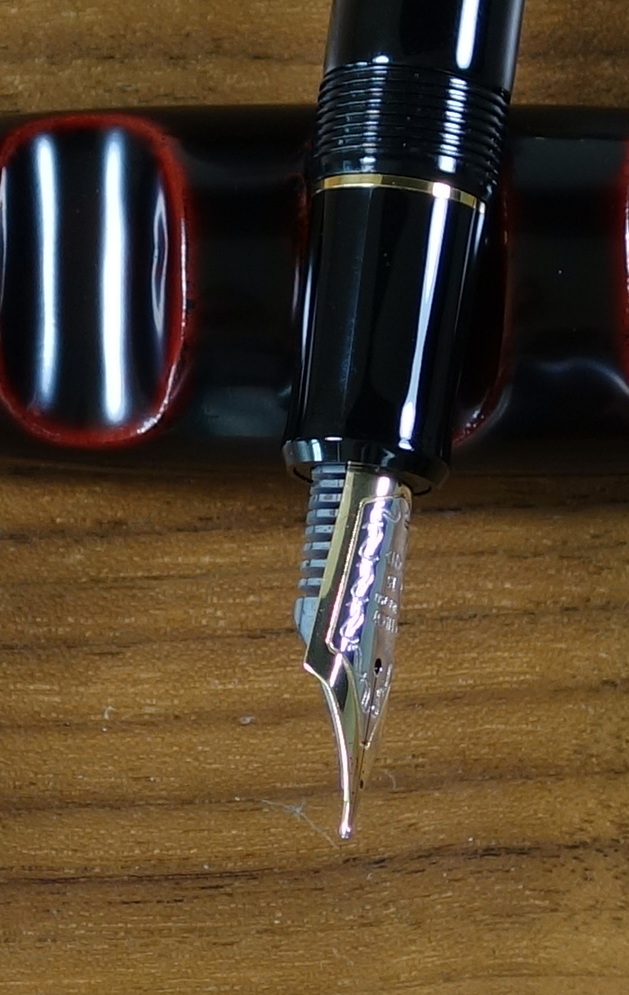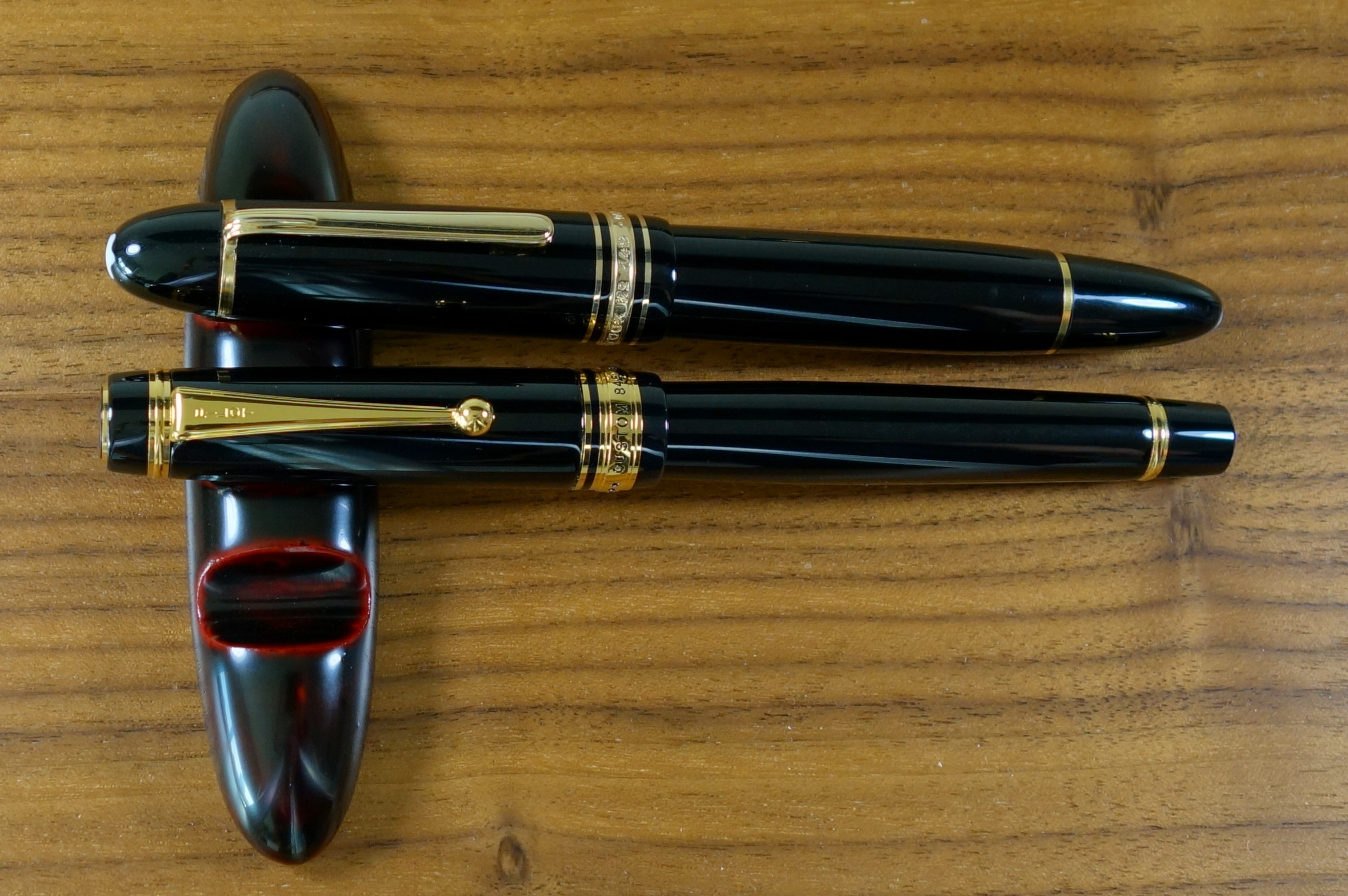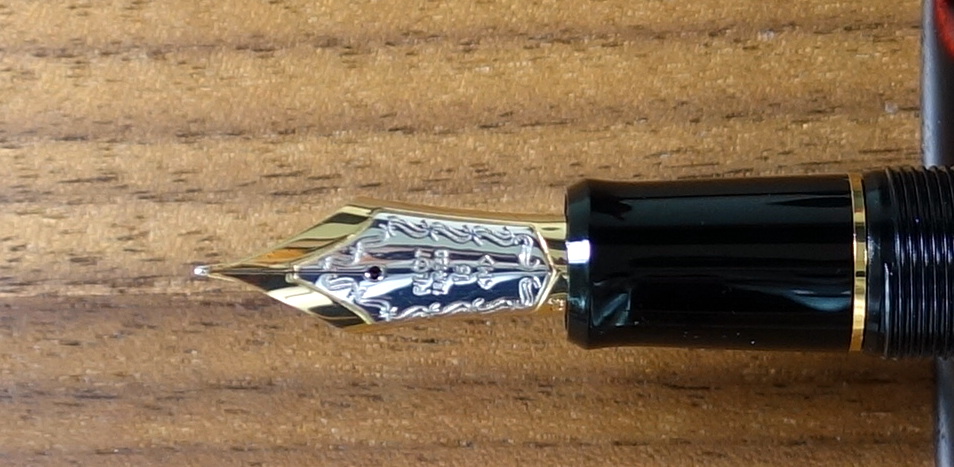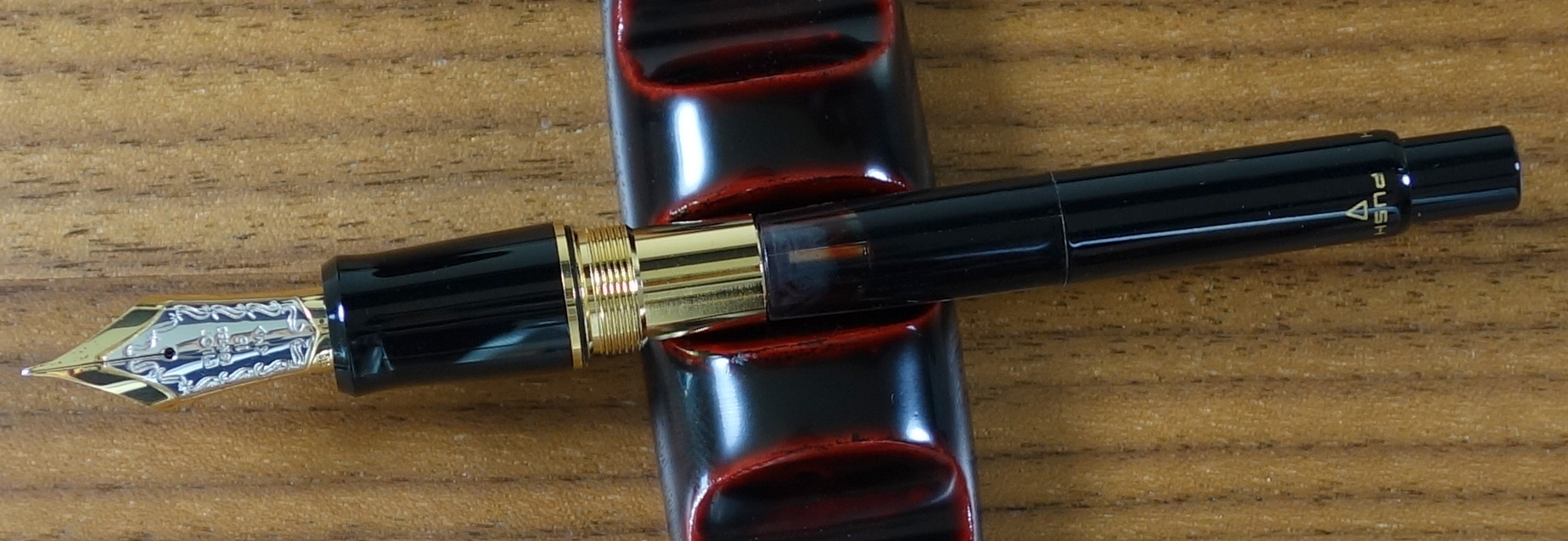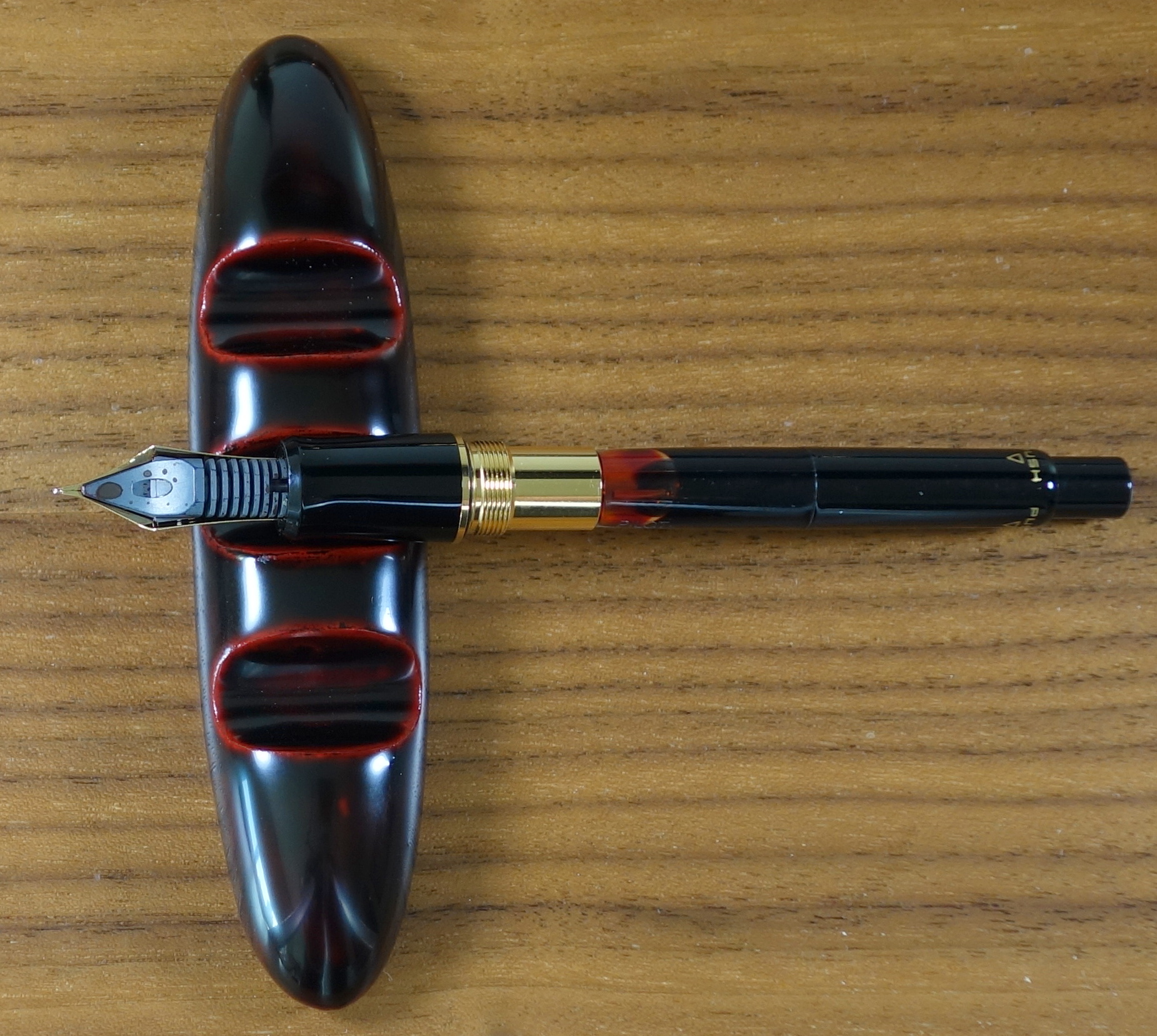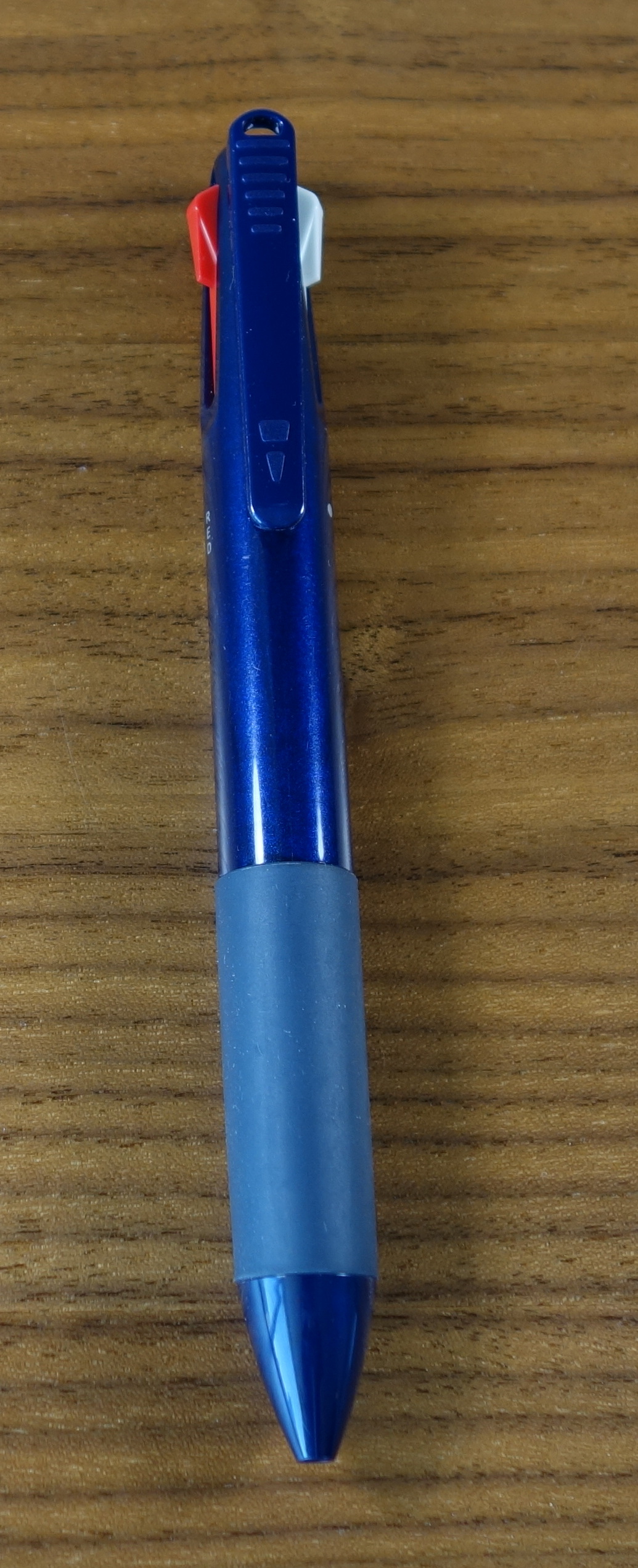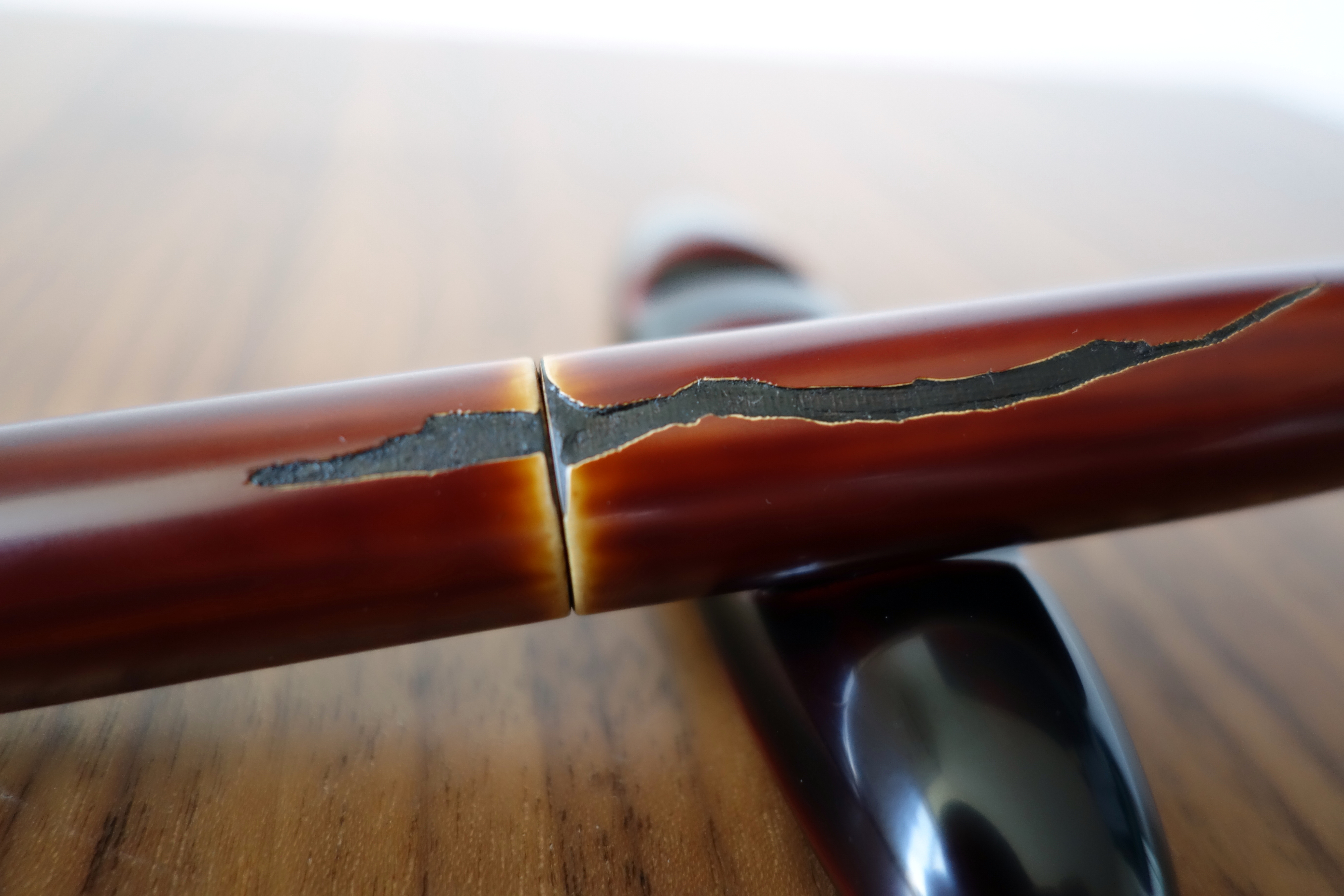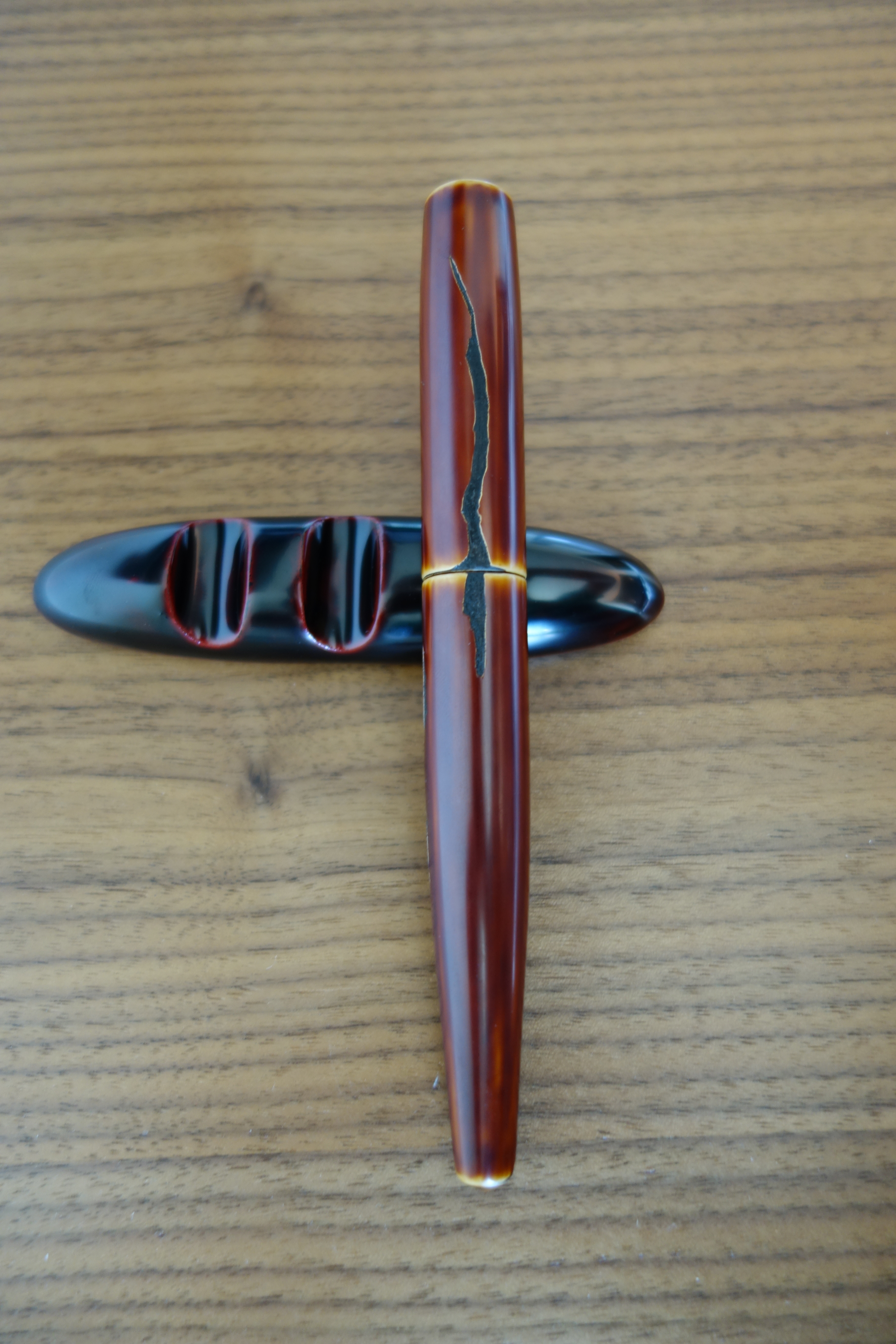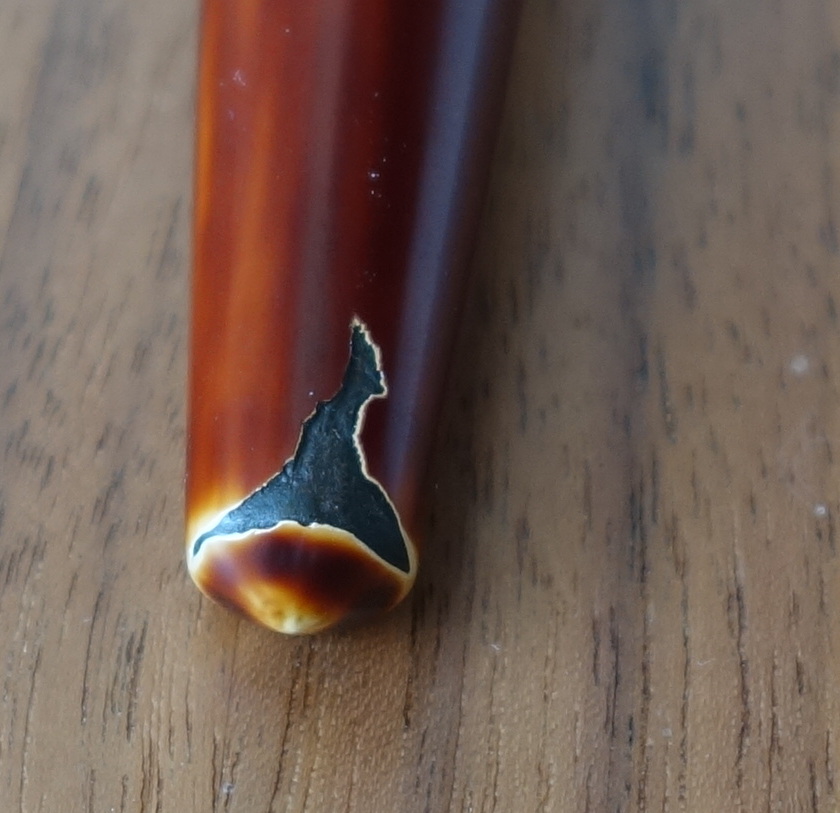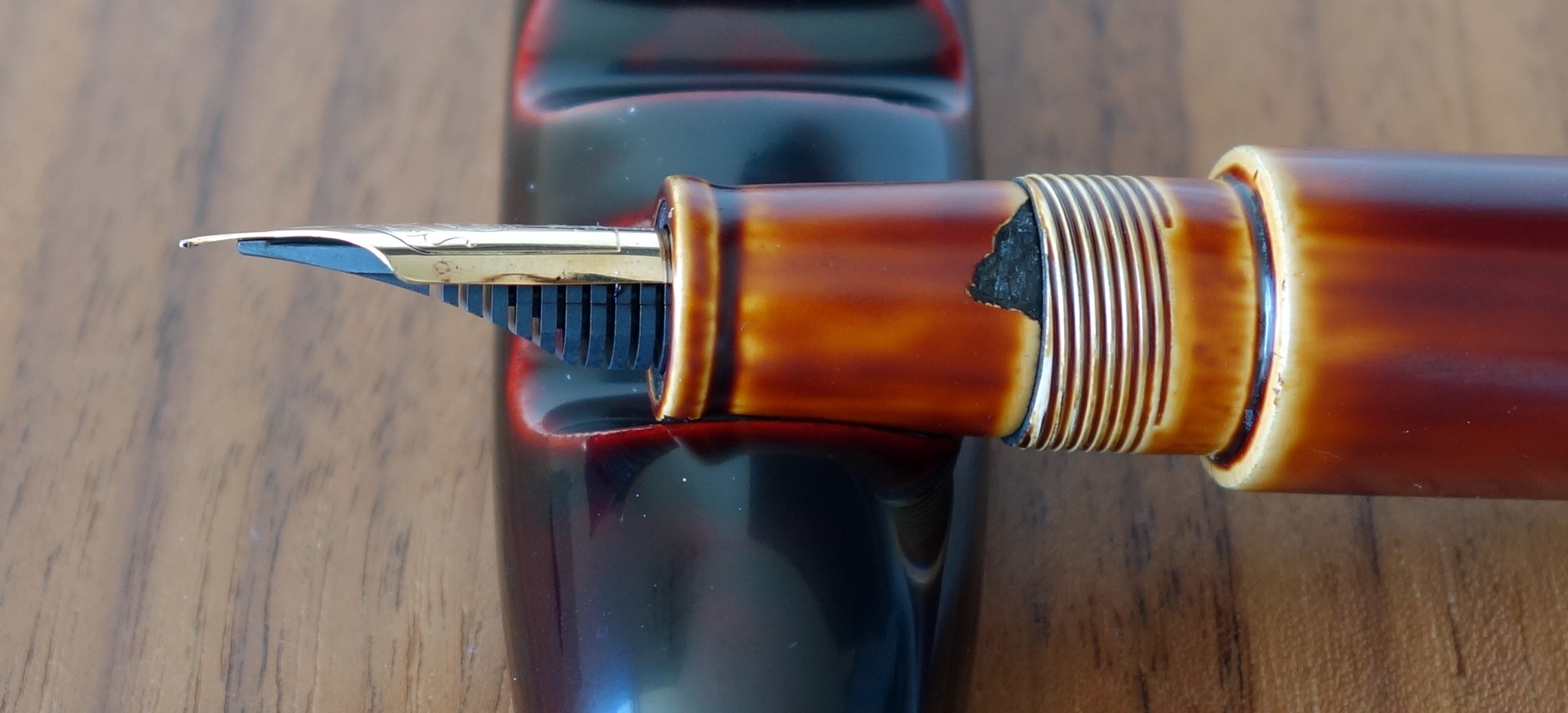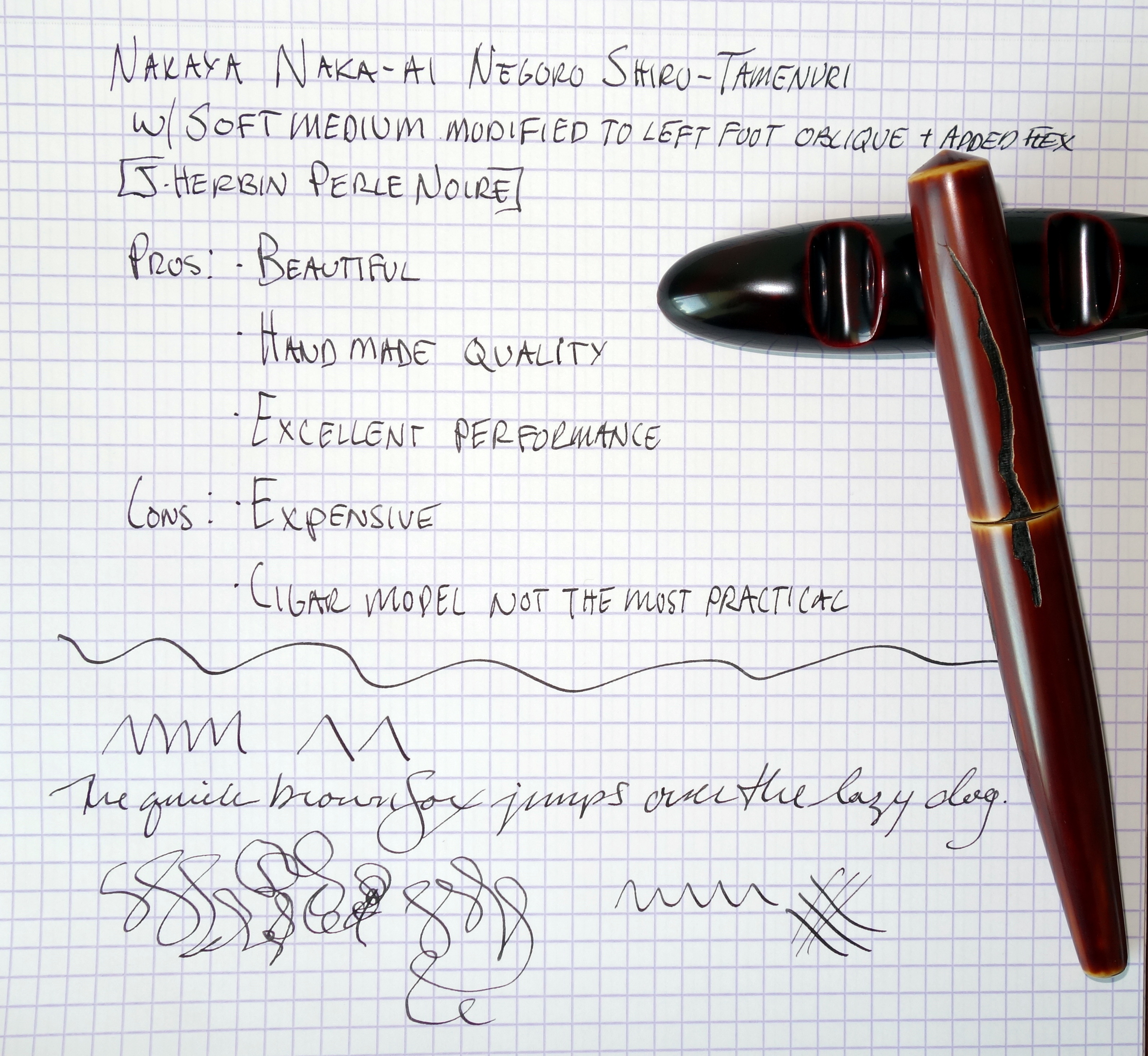 The Delta Horsepower is the first Delta pen I have had my hands on and I have to say that I am impressed. Thank you to my new friends at Pen Chalet for the opportunity to test this beautiful pen.
The Delta Horsepower is the first Delta pen I have had my hands on and I have to say that I am impressed. Thank you to my new friends at Pen Chalet for the opportunity to test this beautiful pen.
Appearance
When you look the Horsepower the first thing you notice is the cap. I have been told that it is supposed to look like a birds eye view of a Formula 1 car. None of the Delta materials that came with the pen explicitly say anything about the cap design. That is a strange omission if you ask me. Here is a picture of a Williams Mercedes F1 car from last weekends Austrian Grand Prix:
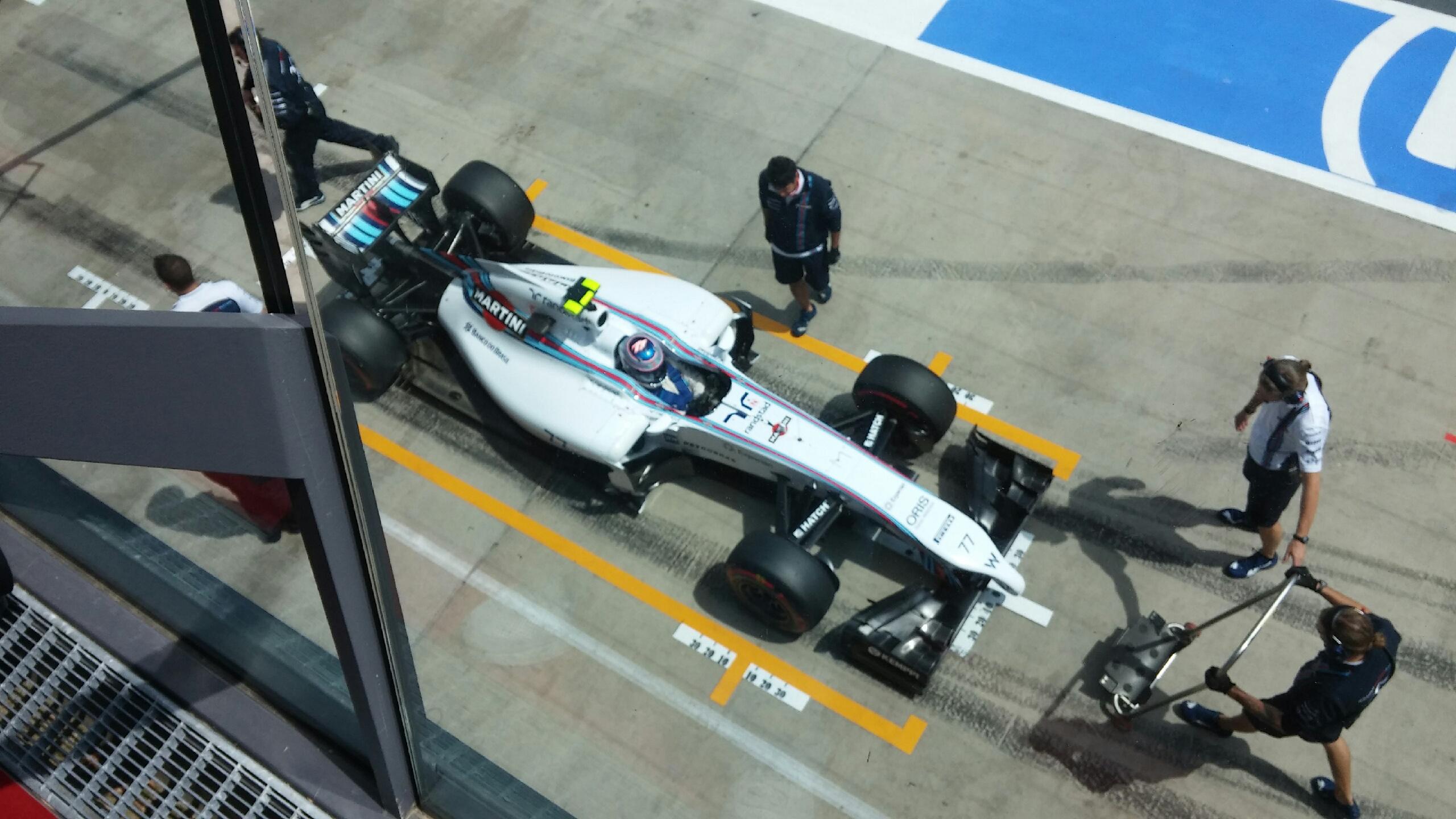

With the F1 car context and squinting really hard I can kind of see it, but it’s a stretch. I like the cap and I think I would like it even more if I didn’t know that it was supposed to look like an F1 car. The hand polished red resin body is beautiful. It’s a really deep rich red. Continuing the race car theme there is a wide band of real carbon fiber around the barrel and unlike the carbon fiber on the Kaweco AC Sport I reviewed, it is very well finished, no loose fibers here.  The ruthenium coated trim pairs beautifully with the carbon fiber. The thick cap ring is imprinted with “HORSEPOWER”. I would have preferred lettering that was a bit less bold but with the dark ruthenium trim it doesn’t jump out too much. That back of the cap is engraved “DELTA ITALY” and is numbered “0295”. This is not a limited edition but I definitely like that the pens are numbered, it’s a nice touch that I don’t see on many pens.
The ruthenium coated trim pairs beautifully with the carbon fiber. The thick cap ring is imprinted with “HORSEPOWER”. I would have preferred lettering that was a bit less bold but with the dark ruthenium trim it doesn’t jump out too much. That back of the cap is engraved “DELTA ITALY” and is numbered “0295”. This is not a limited edition but I definitely like that the pens are numbered, it’s a nice touch that I don’t see on many pens.  The big arched clip is quite nice looking, especially when viewed from the side. I do notice that it sits a bit crooked and looking at other pictures of this pen it seems to be common; it’s not a big deal but worth pointing out.
The big arched clip is quite nice looking, especially when viewed from the side. I do notice that it sits a bit crooked and looking at other pictures of this pen it seems to be common; it’s not a big deal but worth pointing out.  The nib is also ruthenium plated and features some pretty standard looking scrollwork and a Delta logo.
The nib is also ruthenium plated and features some pretty standard looking scrollwork and a Delta logo. 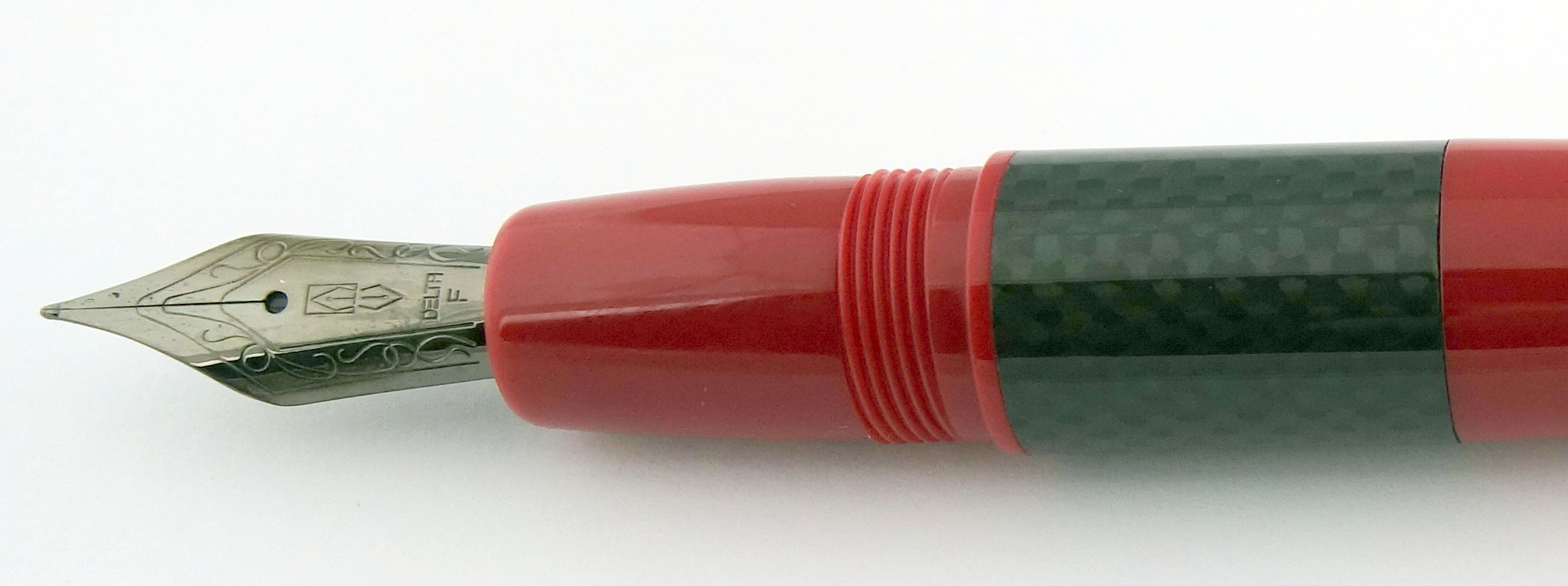 I don’t normally talk about boxes because I think they are boring but the Horsepower’s packaging was quite well done so I thought I should include some pictures:
I don’t normally talk about boxes because I think they are boring but the Horsepower’s packaging was quite well done so I thought I should include some pictures: 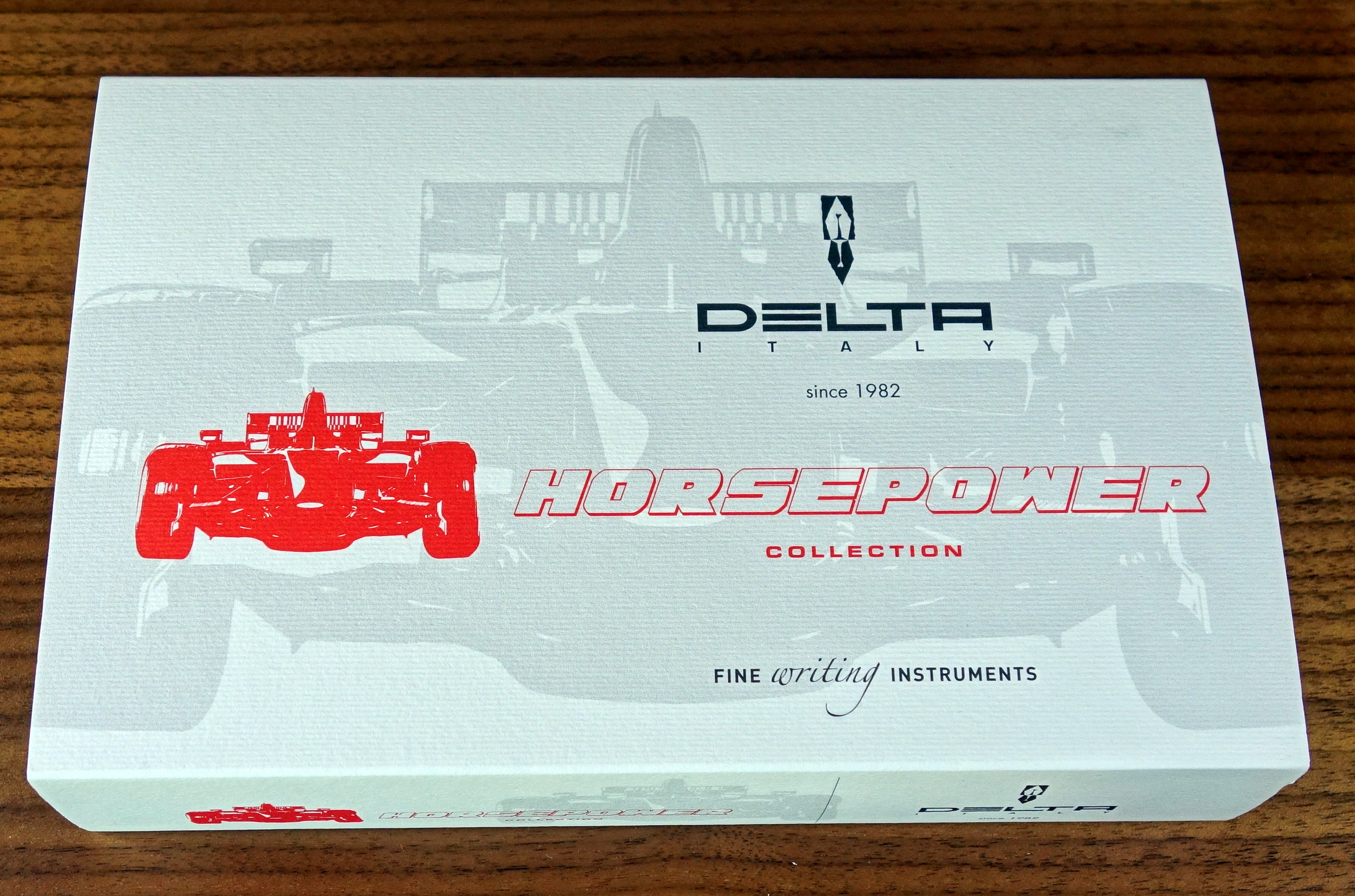
 All in all I really like the look of this pen. The high quality deep red resin and carbon fiber really make for a sporty looking pen. Score: 3.5/5
All in all I really like the look of this pen. The high quality deep red resin and carbon fiber really make for a sporty looking pen. Score: 3.5/5
Build Quality
The fit and finish is a real stand out on this pen; it is excellent. The Delta paperwork states that the pen is entirely made in Italy. The resin body is hand turned from a solid rod and polished by hand. It doesn’t look or feel like the cheap plastic that many similarly priced pens are made of.
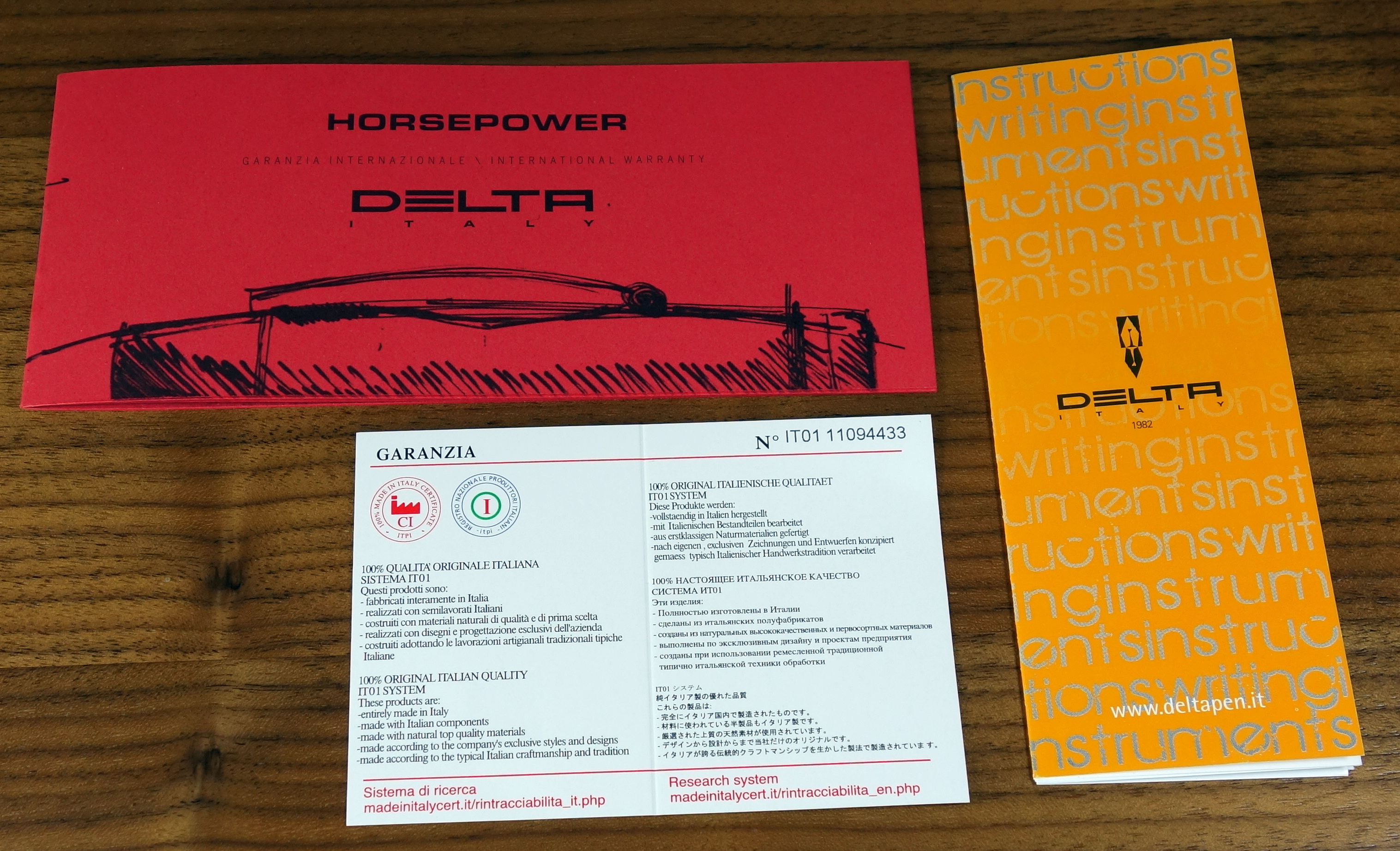
There are no seams on the body and everything fits tightly. Someone definitely took care in making this pen. The only thing that is a bit off is the clip; it is slightly crooked but it doesn’t seem to affect the function of the pen. The Horsepower has a steel Bock nib that doesn’t appear to be overly modified like the Bock nibs you find on some Visconti and OMAS pens. That’s not a knock to the build quality but it is relevant when considering how much this pen might cost to make. Score: 4/5
Size & Weight
The Horsepower measures approximately 5.6” capped and 4.6” uncapped. It’s 0.6” in diameter at its widest point. It’s a pretty thick pen. With ink cartridge installed it weighs 26 grams. The pen posts well on the body but I found it to be a bit top heavy so I prefer to use the Horsepower with the cap off.  I don’t usually give much thought to the shape of the grip section but the combination of a fat section with a convex shape didn’t feel ideal to me. Most of my daily writers with fat sections have a concave shape that feels more secure to me. It could be that I am just used to the concave shape….the Horsepower never felt like it was going to slip out of my hands and overall it is a very comfortable pen that I have enjoyed using. Score: 3.5/5
I don’t usually give much thought to the shape of the grip section but the combination of a fat section with a convex shape didn’t feel ideal to me. Most of my daily writers with fat sections have a concave shape that feels more secure to me. It could be that I am just used to the concave shape….the Horsepower never felt like it was going to slip out of my hands and overall it is a very comfortable pen that I have enjoyed using. Score: 3.5/5
Performance
The fine ruthenium plated steel Bock nib performed flawlessly. No hard starting or skipping, just smooth even lines. The flow is average; I wouldn’t call it wet or dry. 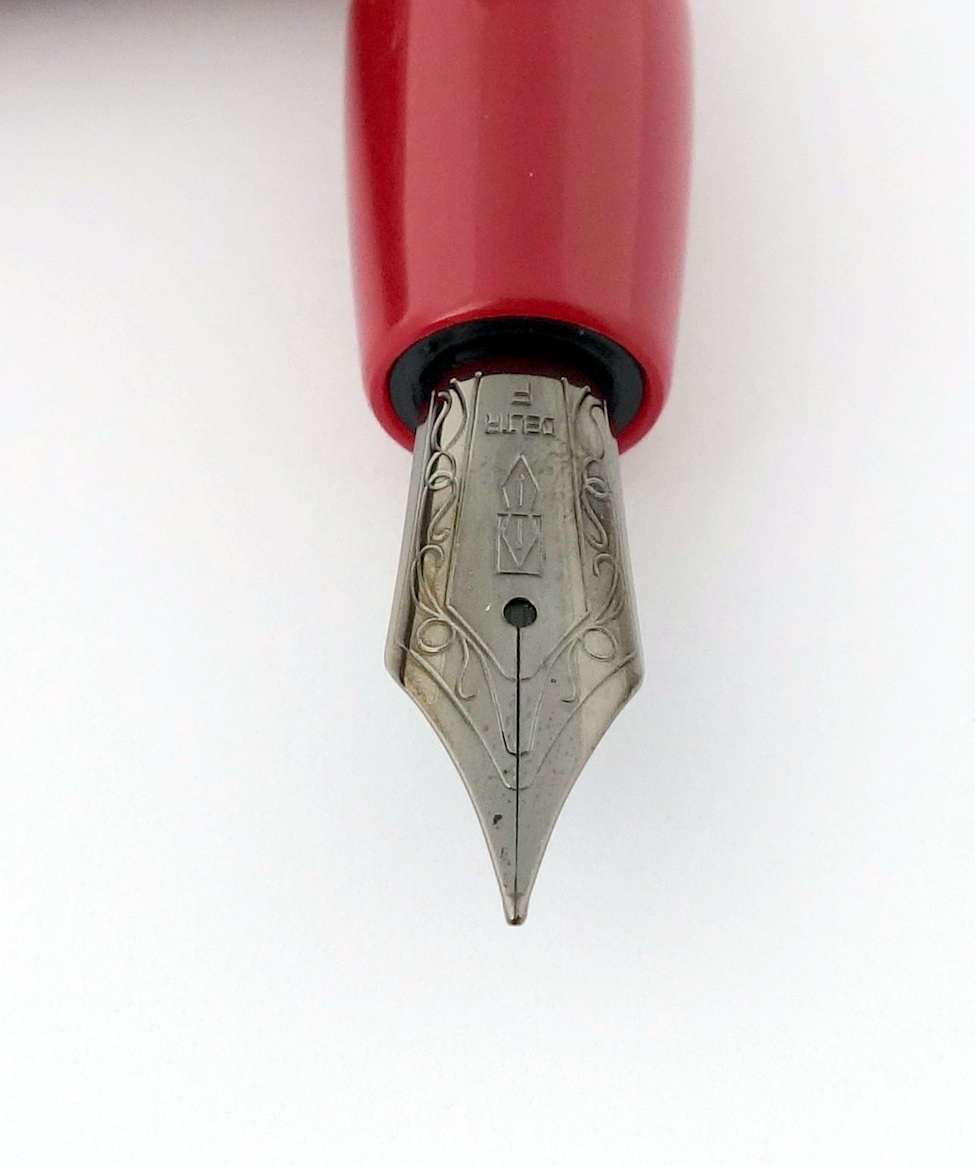 The nib doesn’t have much in the way of character and as you would expect from a steel nib there isn’t any line variation to speak of. If you are seeking a bit of flair, the Delta Horsepower is available with a stub nib.
The nib doesn’t have much in the way of character and as you would expect from a steel nib there isn’t any line variation to speak of. If you are seeking a bit of flair, the Delta Horsepower is available with a stub nib.  Score: 3/5
Score: 3/5
Filling System
 The Horsepower takes standard international cartridges/converters and comes with one black Delta cartridge. Interestingly, it does not come with a converter; that’s a pretty unusual thing to leave out on a pen with a $225 retail price. A converter only costs a few dollars so while not a big deal it does make the package less complete. Score: 2/5
The Horsepower takes standard international cartridges/converters and comes with one black Delta cartridge. Interestingly, it does not come with a converter; that’s a pretty unusual thing to leave out on a pen with a $225 retail price. A converter only costs a few dollars so while not a big deal it does make the package less complete. Score: 2/5
Value
With a street price of $180 I do believe you get your money’s worth but it’s important to think about your priorities for a fountain pen. In this price range there are a lot of wonderful pens. Do you want a pen with a solid gold nib or do you want a pen with a beautifully handcrafted body? For the same money you could have a Lamy 2000, or a Platinum 3776, or a Namiki Falcon, or a Pilot Vanishing Point. None of these pens will be able to match the look and feel of the Horsepower’s body but they all have solid gold nibs. A gold nib is not necessarily a better nib but it can potentially be softer or more springy. The Horsepower is also available with a Delta Fusion nib for a retail price of $395. I have no experience with Fusion nibs but it is my understanding that they are part gold and part steel. Without trying it I cannot say if its worth the extra money. Score: 3.5/5
Bottom Line
Confusing cap design aside, the Horsepower is a beautifully made pen that performs like a champion. Final Score 19.5/30
